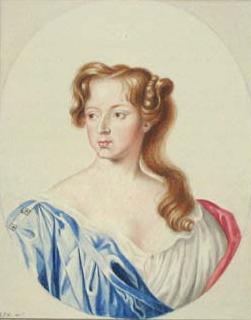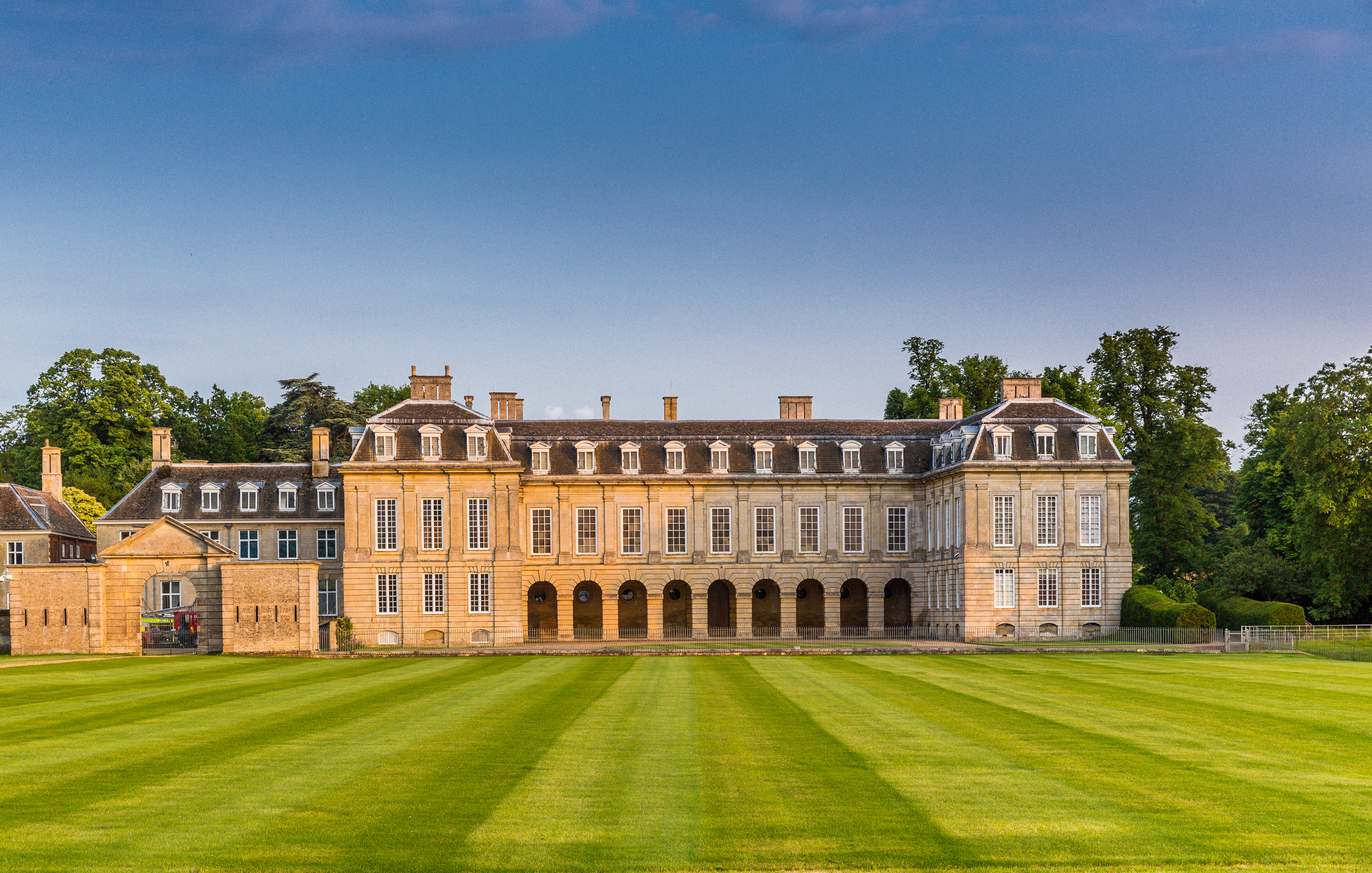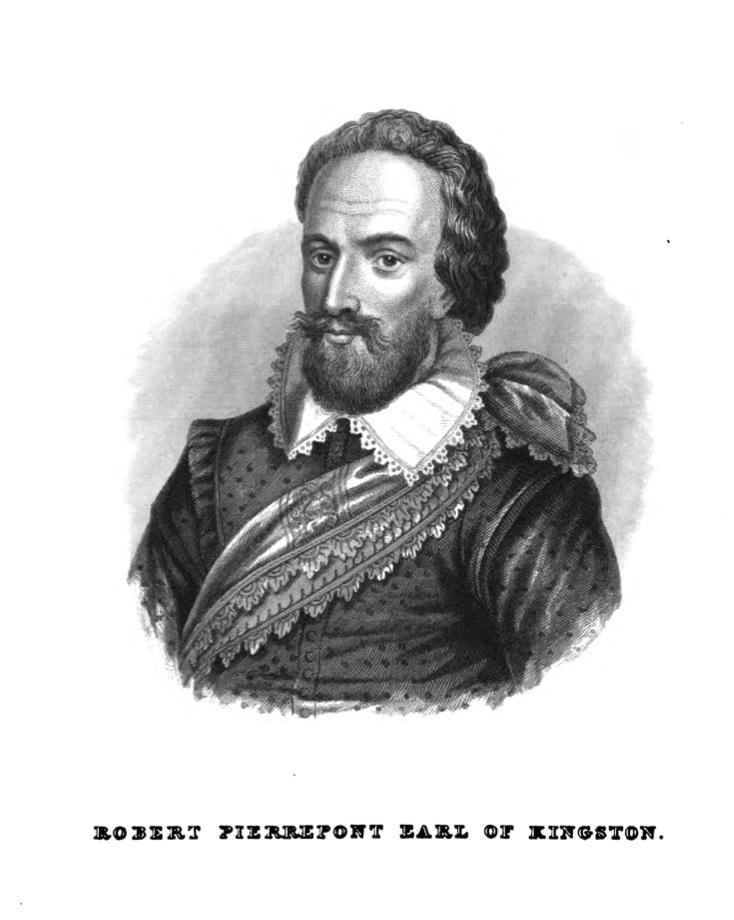|
Henry Cavendish, 2nd Duke Of Newcastle
Henry Cavendish, 2nd Duke of Newcastle-upon-Tyne, KG, PC (24 June 1630 – 26 July 1691), styled Lord Cavendish until 1676, and Viscount Mansfield from 1676, was an English politician who sat in the House of Commons from 1660 to 1676, and then inherited the dukedom. Cavendish was the only son of William Cavendish, 1st Duke of Newcastle and his first wife, Elizabeth Basset. His maternal grandparents were William Basset and Judith Austen, daughter of Thomas Austen. After the Restoration of the Monarchy he was appointed Master of the Robes (June 1660–62) and a Gentleman of the Bedchamber (1662–68). In April 1660, Lord Mansfield was elected Member of Parliament (MP) for Derbyshire in the Convention Parliament. He was elected MP for Northumberland in 1661 for the Cavalier Parliament. In 1676 he inherited the title of Duke of Newcastle and the family seats of Welbeck Abbey, Bolsover Castle and Nottingham Castle on the death of his father and was invested a Knight of the Gart ... [...More Info...] [...Related Items...] OR: [Wikipedia] [Google] [Baidu] |
Nottingham Castle
Nottingham Castle is a Stuart Restoration-era ducal mansion in Nottingham, England, built on the site of a Norman castle built starting in 1068, and added to extensively through the medieval period, when it was an important royal fortress and occasional royal residence. In decline by the 16th century, the original castle, except for its walls and gates, was demolished after the English Civil War in 1651. The site occupies a commanding position on a natural promontory known as "Castle Rock" which dominates the city skyline, with cliffs high to the south and west. William Cavendish, 1st Duke of Newcastle started to build the mansion in the 1670s; it was completed by his son, Henry Cavendish, 2nd Duke of Newcastle. This ducal palace was burnt by rioters in 1831, then left as a ruin until renovated in the 1870s to house an art gallery and museum, which remain in use. Little of the original castle survives other than the gatehouse and parts of the ramparts, but sufficient portions ... [...More Info...] [...Related Items...] OR: [Wikipedia] [Google] [Baidu] |
Thomas Tufton, 6th Earl Of Thanet
Thomas Tufton, 6th Earl of Thanet, 18th Baron de Clifford PC (30 August 1644 – 30 July 1729)G. E. Cokayne; with Vicary Gibbs, H.A. Doubleday, Geoffrey H. White, Duncan Warrand and Lord Howard de Walden, editors. The Complete Peerage of England, Scotland, Ireland, Great Britain and the United Kingdom, Extant, Extinct or Dormant, new ed., 13 volumes in 14 (1910-1959; reprint in 6 volumes, Gloucester, U.K.: Alan Sutton Publishing, 2000), volume III, pp. 297–298. was an English nobleman and politician. He was the fourth son of John Tufton, 2nd Earl of Thanet and his wife Margaret Sackville, Baroness Clifford and inherited the title on the death in 1684 of his elder brother Richard Tufton, 5th Earl of Thanet. Through his maternal grandmother, he was heir to the Barony de Clifford and to vast estates in Cumberland and Westmorland. He served as hereditary High Sheriff of Westmorland from 1684 to 1729. He gained the rank of captain in the service of the Troop of Horse.Charles Mosley ... [...More Info...] [...Related Items...] OR: [Wikipedia] [Google] [Baidu] |
Petworth
Petworth is a small town and civil parishes in England, civil parish in the Chichester (district), Chichester District of West Sussex, England. It is located at the junction of the A272 road, A272 east–west road from Heathfield, East Sussex, Heathfield to Winchester and the A283 road, A283 Milford, Surrey, Milford to Shoreham-by-Sea road. Some twelve miles (21 km) to the south west of Petworth along the A285 road lies Chichester and the south-coast. The parish includes the settlements of Byworth and Hampers Green and covers an area of . In 2001 the population of the parish was 2,775 persons living in 1,200 households of whom 1,326 were economically active. At the 2011 Census the population was 3,027. History The town is mentioned in the Domesday Book of 1086 as having 44 households (24 villagers, 11 smallholders and nine slaves) with woodland and land for ploughing and pigs and of meadows. At that time it was in the ancient Hundred (county division), hundred of Rother ... [...More Info...] [...Related Items...] OR: [Wikipedia] [Google] [Baidu] |
Marriage Settlement
A marriage settlement in England was a historic arrangement whereby, most commonly and in its simplest form, a trust of land or other assets was established jointly by the parents of a bride and bridegroom. The trustees were established as legal owners of the assets, and the bride and bridegroom as beneficial owners of the assets during their lifetimes, and after their deaths, beneficial ownership would descend to one or more of the children of the union. The marriage settlement should not be confused with the modern prenuptial agreement, which is concerned mainly with the division of assets after divorce. Such settlements were also commonly made in the British colonies in North America, among families with assets to protect. Purposes It was a means of ensuring the proper use of a dowry provided by a bride's father to be used for his daughter's financial support throughout her married life and into her widowhood, and also a means by which the bride's father was able to obtain from t ... [...More Info...] [...Related Items...] OR: [Wikipedia] [Google] [Baidu] |
Elizabeth Seymour, Duchess Of Somerset
Elizabeth Seymour, Duchess of Somerset and ''suo jure'' Baroness Percy (26 January 1667 – 23/24 November 1722) was an English heiress. She was styled Lady Elizabeth Percy between 1667 and 1679, Countess of Ogle between 1679 and 1681, Lady Elizabeth Thynne between 1681 and 1682, and Duchess of Somerset between 1682 and 1722. She was the only surviving child and sole heiress of Joceline Percy, 11th Earl of Northumberland (1644–1670). Lady Elizabeth was one of the closest personal friends of Queen Anne, which led Jonathan Swift to direct at her one of his sharpest satires, ''The Windsor Prophecy'', in which she was called "Carrots". Marriages and children She married three times, having children by the third marriage only: Henry Cavendish, Earl of Ogle Aged 12, she married, on 27 March 1679, the 20-year-old Henry Cavendish, Earl of Ogle (1659 – 1 November 1680), the only son and heir of Henry Cavendish, 2nd Duke of Newcastle, who in accordance with the marriage settle ... [...More Info...] [...Related Items...] OR: [Wikipedia] [Google] [Baidu] |
Margaret Cavendish (1661-1717)
Margaret Holles, Duchess of Newcastle-upon-Tyne (''née'' Cavendish; 22 October 1661 – 24 December 1715/16, London) was an English noblewoman. Margaret was born the third daughter and fourth of six children of Henry Cavendish, 2nd Duke of Newcastle-upon-Tyne and his wife, Frances Pierrepoint. On 1 March 1690, she married John Holles, Earl of Clare. Her husband was created Duke of Newcastle in 1694, the first creation having become extinct in 1691 when her father died without a male heir (her only brother, Henry Cavendish, Earl of Ogle, died in 1680). They had one child, Lady Henrietta Cavendish Holles (1694–1755), who married the 2nd Earl of Oxford and Mortimer and was mother to Margaret Bentinck, Duchess of Portland. She died in 1715/16 and was buried at Bolsover Castle. Sources {{DEFAULTSORT:Newcastle-upon-Tyne, Cavendish, Margaret, Duchess of 1661 births 1717 deaths Daughters of English dukes Wives of knights Margaret Newcastle Newcastle usually refers t ... [...More Info...] [...Related Items...] OR: [Wikipedia] [Google] [Baidu] |
John Campbell, 2nd Earl Of Breadalbane And Holland
John Campbell, 2nd Earl of Breadalbane and Holland (19 November 1662 – 23 February 1752) a Scottish nobleman born in Breadalbane to John Campbell, 1st Earl of Breadalbane and Holland and Lady Mary Rich. In 1685 he married Lady Frances Cavendish, daughter of Henry Cavendish, 2nd Duke of Newcastle-upon-Tyne and Lady Frances Pierrepont. With no issue Lady Frances died on 4 February 1690. On 23 May 1695 the Earl married a second time to Henrietta Villiers, daughter of Edward Villiers and Lady Frances Howard. They had three children including John Campbell, 3rd Earl of Breadalbane and Holland. The Earl was commonly referred to as Lord Glenorchy. On 19 March 1717 he succeeded his father as the 2nd Earl of Breadalbane and Holland. He also could claim other titles such as the 6th Baronet Campbell of Glenorchy; 2nd Viscount of Tay and Paintland; and 2nd Lord Glenorchy, Benederaloch, Ormelie and Weick. From 1725 to 1752 he was the Lord-Lieutenant of Perthshire This is a list of peo ... [...More Info...] [...Related Items...] OR: [Wikipedia] [Google] [Baidu] |
Ralph Montagu, 1st Duke Of Montagu
Ralph Montagu, 1st Duke of Montagu (24 December 1638 – 9 March 1709) was an English courtier and diplomat. Background Ralph Montagu was the second son of Edward Montagu, 2nd Baron Montagu of Boughton (1616–1684), and Anne Winwood, daughter of the Secretary of State Ralph Winwood. The peerage of his father was one of several granted in the seventeenth century to different members of the Montagu family. Sir Edward Montagu, Chief Justice of the King's Bench in the time of Henry VIII, was grandfather of the 1st Earl of Manchester, and of the 1st Baron Montagu of Boughton (1562–1644), who was imprisoned in the Tower by the Parliament on account of his loyalty to Charles I. The eldest son of the latter, Edward, who succeeded him as the 2nd Baron, took the side of the Parliament in the Civil War, and was one of the lords who conducted the king from Newark-on-Trent to Holmby House in January 1647, after he was handed over by the Scots, to whom he had initially surrendered, ... [...More Info...] [...Related Items...] OR: [Wikipedia] [Google] [Baidu] |
Christopher Monck, 2nd Duke Of Albemarle
Christopher Monck, 2nd Duke of Albemarle (14 August 1653 – 6 October 1688) was an English soldier and politician who sat in the House of Commons of England, House of Commons from 1667 to 1670 when he inherited the Dukedom and sat in the House of Lords. Origins Monck was the son and heir of George Monck, 1st Duke of Albemarle (1608–1670) by his wife Anne Clarges (d.1700), a daughter of John Clarges, "Farrier in the Savoy Palace, Savoy", of Drury Lane, Westminster. Anne's brother was Sir Thomas Clarges (c. 1618–1695), Member of Parliament, MP, who greatly assisted his brother-in-law, then before his elevation to the dukedom, General George Monck, in bringing about the Restoration of the English monarchy, Restoration of the Monarchy in 1660. She was the presumed widow of Thomas Radford, milliner, of New Exchange, Strand, Westminster, although it was said that her husband was still alive when her son was born. This left a question concerning Monck's legitimacy. Youth Mon ... [...More Info...] [...Related Items...] OR: [Wikipedia] [Google] [Baidu] |
Elizabeth Monck, Duchess Of Albemarle
Elizabeth Monck, Duchess of Albemarle (22 February 1654 – 11 September 1734), later Elizabeth Montagu, Duchess of Montagu, was the eldest daughter of Henry Cavendish, 2nd Duke of Newcastle, and his wife, Frances Pierrepont (1630–1695; daughter of the Hon. William Pierrepont). Lady Elizabeth Cavendish married Christopher Monck (later Duke of Albemarle) on 30 December 1669 at Whitehall, London. She went with her husband to Jamaica when he was appointed Lieutenant Governor in 1687; there Monck amassed a small fortune, which Elizabeth acquired and brought with her back to England upon his death in the following year (1688). Elizabeth was given the epithet of "the Mad Duchess of Albemarle" -- viz. she declared that she would only marry into royalty and was convinced that the Kangxi Emperor of Qing Dynasty China wished to marry her. Her sister-in-law Elizabeth's stepfather, the Duke of Montagu -- suitably dressed as the Emperor of China -- asked for her hand in marriage and they ... [...More Info...] [...Related Items...] OR: [Wikipedia] [Google] [Baidu] |
Robert Pierrepont, 1st Earl Of Kingston-upon-Hull
Robert Pierrepont, 1st Earl of Kingston-upon-Hull (6 August 158425 July 1643) was an English nobleman who joined the Royalist side in the English Civil War after some delay and became lieutenant-general of the counties of Lincoln, Rutland, Huntingdon, Cambridge and Norfolk. He was killed in a friendly fire incident after being captured by Parliamentary forces. Family He was the second son of Sir Henry Pierrepont of Holme Pierrepont, Nottinghamshire, and Frances Cavendish, ThePeerage.com, Retrieved 27 December 2008 daughter of the Rt. Hon. Sir William Cavendish and Elizabeth Hardwick. His sister became |




